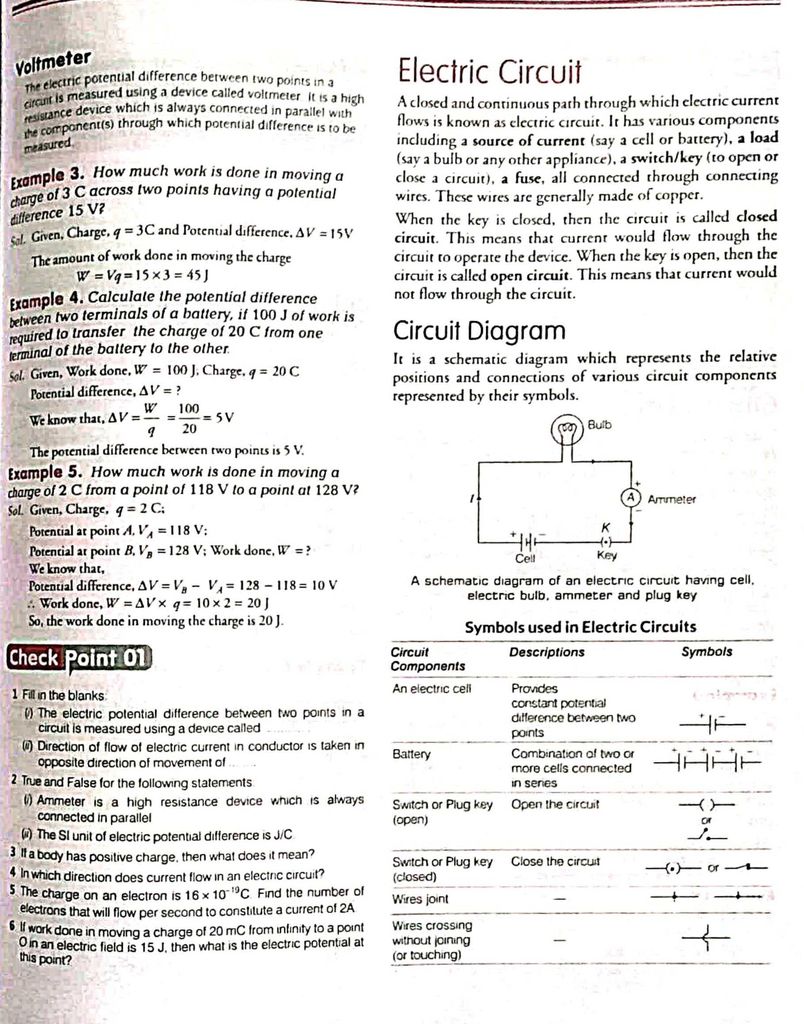- Books Name
- SonikaAnandAcademy Science Book
- Publication
- SonikaAnandAcademy
- Course
- CBSE Class 10
- Subject
- Science

- Books Name
- Iti Shree Science Book
- Publication
- Vaishnav Publication
- Course
- CBSE Class 10
- Subject
- Science
Heating effects of Electric Current
When charge Q moves against the potential difference V in time t, the amount of work is given by-

Joules Law of Heating
- The heat produced in a resistor is directly proportional to the square root of the current.
- It is also directly proportional to resistance for a given current.
- Also, directly proportional to the time
H = l2 Rt
Heating Effects of electric current
- The electric laundry iron, electric toaster, electric oven, electric kettle and electric heater are some of the familiar devices based on Joule’s heating.
- Electric heating is also used to produce light in a bulb. The filament of an electric bulb is made up of tungsten because it has a very high melting point and also does not oxidise readily at a high temperature.
- An electric fuse is a safety device to protect the electrical appliance from a short circuit. The fuse is placed in series with the device. It consists of a piece of wire made of a metal or an alloy of appropriate melting point, for example, aluminum, copper, iron, lead etc. If a current larger than the specified value flows through the circuit, the temperature of the fuse wire increases. This melts the fuse wire and breaks the circuit.
Electric Power
The rate at which electric energy is dissipated or consumed in an electric current. The SI unit of power is Watt.
P = Vl
⇒ P = l2 R = V2/R
The commercial unit of electric energy is a kilowatt-hour (KWh).

 SonikaAnandAcademy
SonikaAnandAcademy
